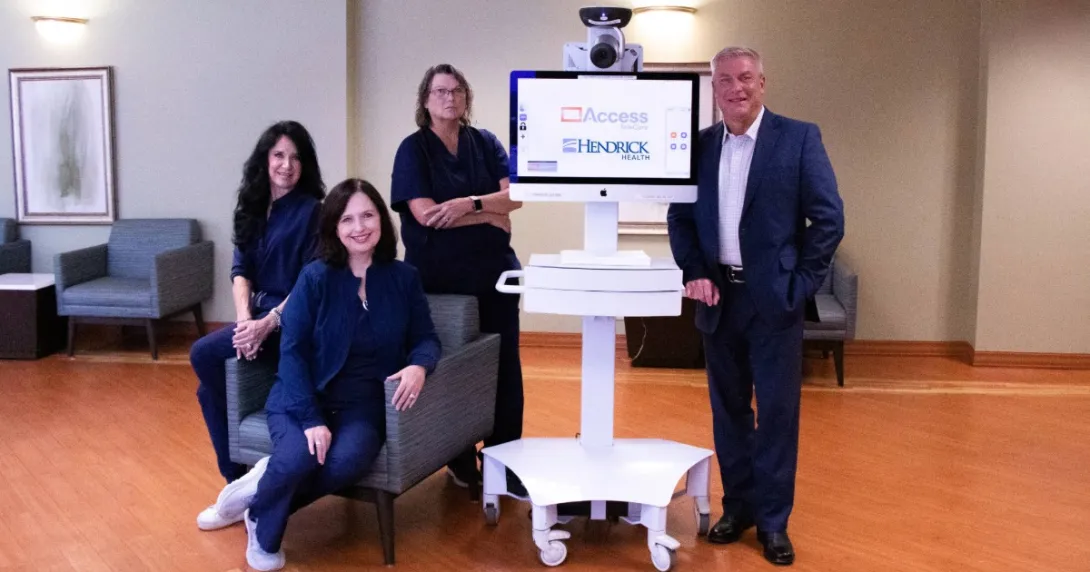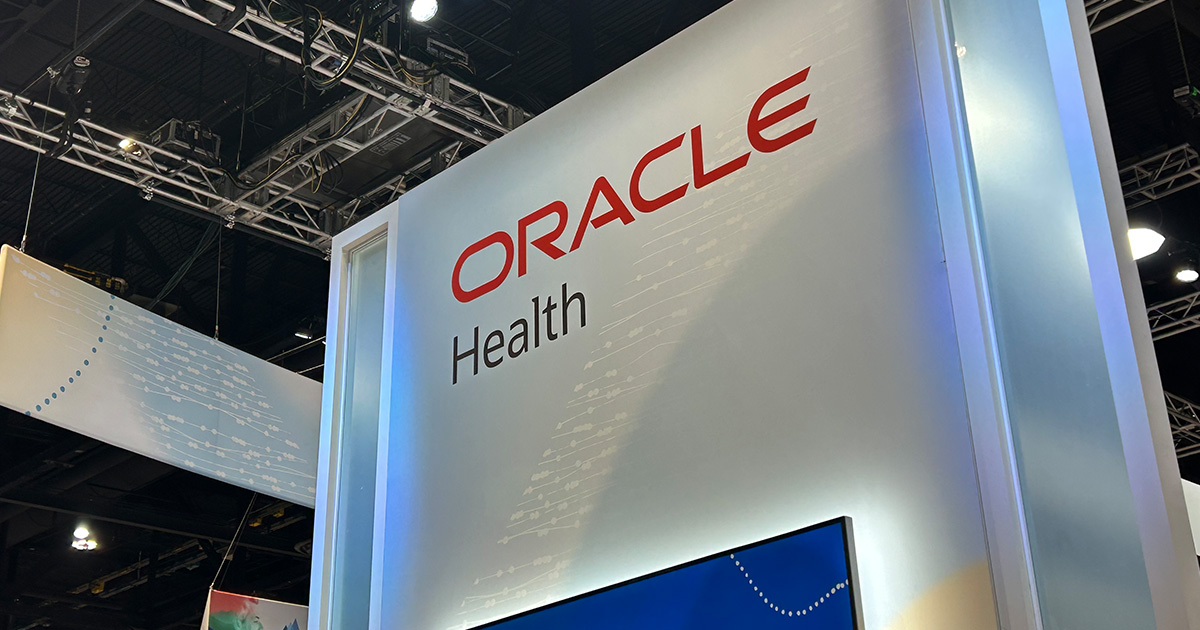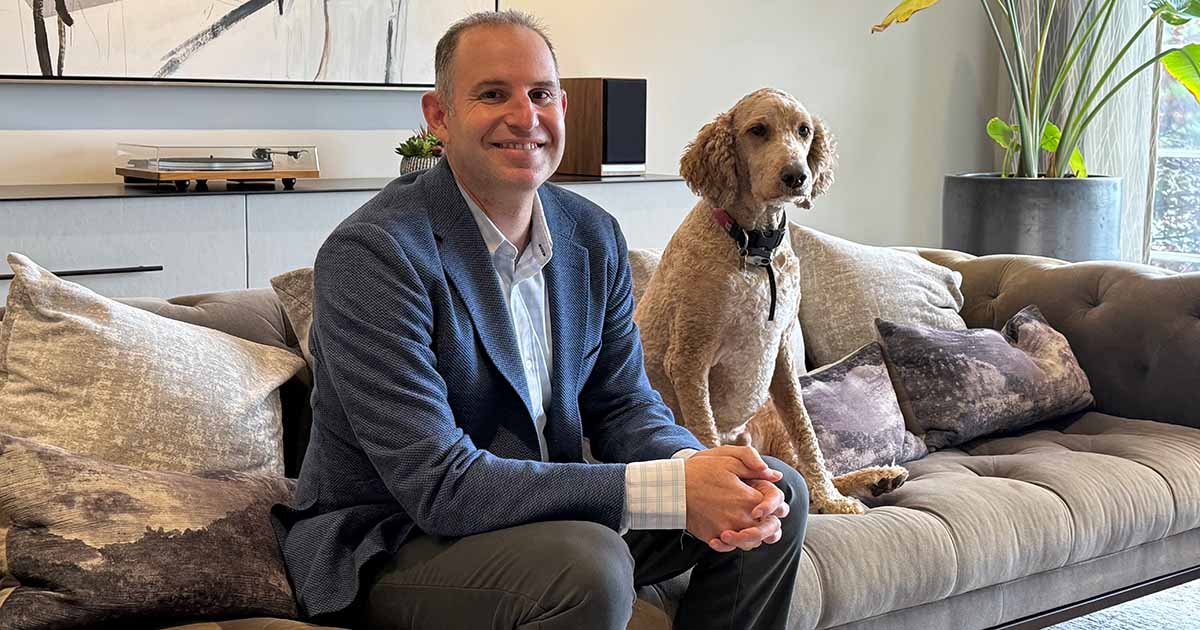
(Standing) Bea Boggs and Craig Hunnicutt. (Sitting, left to right) Gail Scruggs and Martee Tebow. With some of their tele-neurology equipment.
Photo: Hendrick Health
Hendrick Health is a three-hospital health system, with Hendrick Medical Center and Hendrick Medical Center South located in Abilene, Texas, and Hendrick Medical Center Brownwood located 75 miles southeast in Brownwood.
THE CHALLENGE
With a 24-county service area, Hendrick Health provides care to a mostly rural population of approximately 400,000 residents in the West Central Texas region. The service area makes up 9% of the landmass of Texas, which is comparable to the size of West Virginia.
However, many patients from outside the "official" service area seek specialty care from one of Hendrick Health's locations because of capacity constraints at other tertiary centers in the western half of the state.
The fundamental stroke care challenge in West Texas, and for Hendrick Health in particular, has been and continues to be too few neurologists to meet the ever-growing stroke care needs within the region.
Given the demands on outpatient clinic schedules, inpatient consultation, rounding and call coverage, it's challenging for local neurologists to meet the critical and time-sensitive needs required with a robust stroke care program.
"Because every second counts, and time is brain, a quality stroke program needs dedicated 24/7 emergent stroke call coverage," said Craig Hunnicutt, director of regional services at Hendrick Health. "National stroke-designated healthcare facilities must adhere to strict time, quality and outcome metrics. Hendrick Health's deep commitment to its patients led clinicians and administrators to evaluate the addition of stroke telemedicine.
"Neurology consultations through telemedicine technology were some of the earliest use cases for stroke care and were established long before telemedicine came to the forefront during the COVID-19 pandemic," he continued. "Many of the early tele-stroke programs were homegrown by urban area comprehensive stroke centers using their neurology bench strength to offer telemedicine consults with surrounding facilities."
This hub-and-spoke model typically involved the comprehensive stroke center (the hub) placing a telemedicine "robot" in the surrounding hospitals (the spokes) to facilitate the stroke consult.
"The telemedicine robot was mobile and was moved to the patient's bedside for consultation," Hunnicutt explained. "In most cases, the consulting neurologist could then take control of the high-resolution camera on the robot from his or her desktop computer or smartphone – zooming in on the patient's face and eyes as they performed their assessment.
"The large high-definition screen, speakers and microphone provided real-time communication and engagement," he continued. "This early patient intervention with a neurologist allowed for coordination of care and transfer of the patient between the spoke facility and hub, where higher levels of care could be accessed."
This model addressed the provider disparity between the larger urban centers and smaller rural facilities by establishing virtual stroke call coverage where previously call coverage was impossible.
PROPOSAL
Initially, Hendrick Medical Center adopted a hybrid hub-and-spoke model of tele-neurology for stroke care, partnering with a comprehensive stroke center to place a telemedicine robot on site. However, the 24/7 tele-neurology coverage for emergent stroke consultations in the emergency department was contracted through a third-party provider group.
The tele-neurology service covered all stroke codes in the ED, while local in-house neurologists responded to stroke codes that occurred on inpatient units.
Hendrick Health's acquisition of the facilities in south Abilene and Brownwood prompted a consolidation of tele-neurology services across the system, and Access TeleCare became the single inpatient telemedicine technology and services company.
"Consolidating services streamlined technology usage, consultation request processes, call coverage scheduling, invoicing and quality metrics related to stroke care," Hunnicutt explained. "At the same time, demand grew beyond capacity for in-house neurologists and dictated a shift toward all stroke code consultations being performed by Access TeleCare.
Currently, multiple carts from the telemedicine company are available and housed at each hospital campus and in the freestanding emergency departments.
"Here's how it works," Hunnicutt explained. "When a stroke code is activated, an emergent consult request is placed in Access TeleCare's Telemed IQ Request Platform, where it is instantly routed to the on-call tele-neurologist. At the same time, the cart is taken to the patient's location.
"The tele-neurologist works within Hendrick Health's electronic health record and picture archiving and communication system to access patient medical information, document, and review imaging," he continued. "Through advanced camera technology, the tele-provider is able to manipulate the camera to assess the patient and deliver a meaningful patient and family experience."
With the assistance of nursing at the bedside, the Access TeleCare provider also is able to assess the patient's National Institutes of Health Stroke Scale and make recommendations using inclusion/exclusion criteria to determine the best course of treatment – whether IV thrombolytic therapy and/or endovascular thrombectomy for acute ischemic stroke.
MEETING THE CHALLENGE
As Hendrick Medical Center prepares to move its designation from primary stroke center to thrombectomy capable center, aligning internal processes was crucial to achieve the very best outcomes for patients.
"One recent process improvement included the implementation of Viz.ai, a powerful artificial intelligence system designed to evaluate computed tomography and computed tomography angiography imaging to identify large vessel occlusion or intracerebral hemorrhage quickly," said Martee Tebow, RN, stroke program manager at Hendrick Health.
"The algorithm feature for CT perfusion assists neuro-interventionalists with determination of risk versus benefit of advanced treatment options," she continued. "Because all stroke care team members have access to the Viz.ai platform on their workstations and smartphones, they receive immediate alerts for potential large vessel occlusions on CTA or hemorrhage on CT."
Again, "time is brain" and the AI platform has been a valuable tool in helping reduce door-to-intervention times, she added.
RESULTS
In the last five years, tele-neurology consult volume has increased by 600% across the Hendrick Health system. The practical values of such an increase are in the number of lives saved, the improved outcomes and the increased quality of life for patients, Tebow said.
Additionally, rural residents of West Central Texas now have access to the same high-quality stroke care found in any urban medical center, she added.
The work with the telemedicine company has resulted in reduced numbers of transfers from Hendrick Health facilities to other facilities for higher level stroke care – the 24/7 tele-neurology coverage provided the foundation for growth of a 24/7 thrombectomy capable program, resulting in improved stroke care closer to home, she said.
"For quality metrics, Access TeleCare has become a vital part of the stroke care team," she explained. "Hendrick Health and Access TeleCare staff continually evaluate and improve processes. Through this collaboration, stroke call-to-screen time has been reduced to under 7.5 minutes over the last 12 months – half of the stated benchmark of 15-minute call-to-screen time. The critical time saved on call-to-screen has resulted in quicker intervention times.
"Another improved metric is door-to-needle time," she noted. "Overall, door-to-needle time at all three Hendrick Health campuses has resulted in a growing number of cases coming in under 45 minutes. Recently, the team achieved a door-to-needle time of 34 minutes. Of course, the real success behind these metrics is the improved outcomes for patients and their family members."
ADVICE FOR OTHERS
Some view the emergence of telemedicine technology and its processes as silver linings stemming from the COVID-19 pandemic. While the pandemic necessitated the use of telemedicine and other virtual medical services as care delivery methods, healthcare organizations continue to face significant challenges that likely will rely on telemedicine technology as part or all of the solution, Hunnicutt said.
"As physician shortages continue to increase, the disparity between urban and rural access to primary and specialty care are also on the rise," he noted. "In stroke care alone, rural residents have 80% less access to neurological care than their urban counterparts. For many rural areas, there is simply no access at all. Given this reality, telemedicine technology will continue to be a solution for provider access challenges in both the rural and urban settings.
"The stroke program at Hendrick Health is proof that telemedicine technology can be part of the solution to delivering the highest possible level of patient care," he concluded. "If telemedicine can be an integral component in one of the most time-sensitive, critical, lifesaving programs a hospital offers its patients, then the possibilities are endless for other ways that virtual technologies can improve access to quality care."
Follow Bill's health IT coverage on LinkedIn: Bill Siwicki
Email him: bsiwicki@himss.org
Healthcare IT News is a HIMSS Media publication.
WATCH NOW: Seattle Children's Chief AI Officer talks better outcomes through the technology


